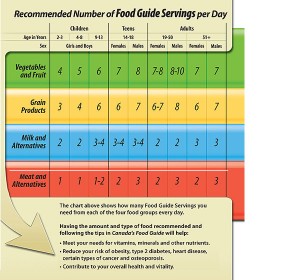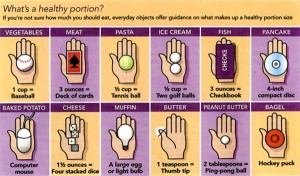NUTRITION is a HUGE component of any healthy lifestyle, but during high stress, high demand events and training such as TOUGH MUDDER, it is essential that your diet supports and nourishes your body and remains at high priority.
ALL recommendations are based off of CANADA FOOD GUIDE and Dietitians of Canada website
SEE Dietitians of Canada website for more details: www.dietiticans.ca
For specific nutritional information please contact a Registered Dietitian
H20- HYDRATION
The average adult needs 2-3 L or 9-12 cups of fluid per day
An active adult needs even more fluid to replace the fluid that is lost through sweating
Sweating helps cool the body during exercise or increased environmental temperatures.
Thus, the more you sweat, the more fluid you need… but if you do not keep up with
your fluids, an increased risk of dehydration occurs.
Symptoms of dehydration:
- can leave you feeling overheated, tired and can cause decreases in performance
- thirst
- dizziness
- chills
- nausea
- headache
- muscle cramps
severe dehydration can be serious if it is not treated right away
Ensure that you drink regularly before, during and after exercise!
TIPS FOR HYDRATION
- check your urine! a light yellow color (like lemonade or pale yellow) usually indicates hydration
- a dark yellow color indicates dehydration
- aim for “clean or clear urine” at least 2 hours prior to exercise
- water is usually your best choice before and during exercise
- after exercise water is a very good choice but suitable replacements include:
- milk or chocolate milk
- 100% fruit juice
- sports drinks
- spread intake of fluids throughout the day, remembering to replenish fluids during exercise as you sweat
Fluids to avoid during exercise
- soft drinks including pop, lemonades, carbonated waters etc
- fruit drinks, juices, iced teas
- cold coffee drinks and caffeinated beverages such as energy drinks
PORTION SIZES
A common trend across the country is inconsistency in portion size. Take a look at your favorite restaurants, fast food locations and grocery supplies. Restaurants appeal to appetites and bring in business by eliciting huge portions, ensuring no body goes home feeling hungry! An issue that arises because of this is over eating, weight gain and an imbalance of energy in vs energy out.
The Canada Food Guide is an excellent resource for diet information.
It is a good idea to compare your typical serving sizes to the examples shown below. Do your serving sizes typically resemble the visual sizes below? It is very common for people to over estimate the actual size of servings. Based on this information we challenge you to modifying your meal sizes and portions according to the recommendations of the Canada Food Guide and see what differences you feel in your energy levels!
WHAT DOES THIS LOOK LIKE?
References- Canada Food Guide, www.Dietitians.ca, www.hc-sc.gc.ca
Images- Canada Food Guide, drnicholasshannon.com




